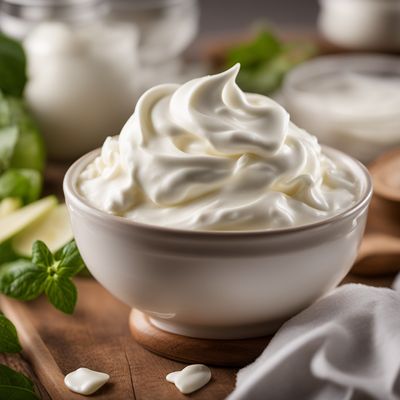
Ingredient
Cheese flavour
Savory Sensation: The Magic of Cheese Flavor
Cheese flavor is a versatile ingredient that can be used to add a savory and tangy taste to various dishes. It is often used in snacks, sauces, dressings, and seasonings to provide a rich and creamy flavor reminiscent of different types of cheese. Whether it's a sprinkle of powdered cheese on popcorn or a creamy cheese sauce for pasta, the cheese flavor elevates the culinary experience.
Origins and history
The origins of cheese flavor can be traced back to the ancient practice of cheese-making, which dates back thousands of years. Cheese has been a staple in many cultures around the world, and its distinct flavor has been sought after and replicated in various forms. Today, cheese flavor is commonly used in the food industry to enhance the taste of processed foods and snacks.
Nutritional information
Cheese flavor is typically low in calories and fat, but it can vary depending on the specific product or formulation. It is a concentrated ingredient, so a little goes a long way in terms of flavor impact. It is important to check the nutritional information on the packaging to understand the specific values and potential allergens present in the product.
Allergens
Cheese flavor may contain allergens such as milk or dairy products. Individuals with lactose intolerance or dairy allergies should check the ingredient list and consult with a healthcare professional if necessary.
How to select
When selecting cheese flavor, look for high-quality products from reputable brands. Consider the specific type of cheese flavor you desire, such as cheddar, Parmesan, or a blend. Pay attention to the ingredients list to ensure it does not contain any allergens or artificial additives. Opt for natural cheese flavorings whenever possible.
Storage recommendations
To maintain the freshness and quality of cheese flavor, store it in a cool, dry place away from direct sunlight. Keep it tightly sealed to prevent moisture or air from affecting its flavor. Avoid exposing it to extreme temperatures, as it can cause the flavor to deteriorate or clump together.
How to produce
Cheese flavor is typically produced through a combination of natural or artificial ingredients that mimic the taste of cheese. It can be made by blending cheese powders, extracts, or concentrated flavorings with other ingredients to create a versatile flavoring agent. The exact production process may vary depending on the specific product and manufacturer.
Preparation tips
Cheese flavor can be used in a wide range of culinary applications. It is commonly used in snacks like popcorn, chips, and crackers to provide a cheesy taste. It is also used in sauces, dressings, and dips to add a creamy and savory element. Additionally, it can be incorporated into seasonings and spice blends to enhance the flavor of various dishes.
Culinary uses
Cheese flavor is widely used in the food industry, particularly in processed foods, snacks, and convenience products. It is a popular ingredient in American cuisine, where it is used in dishes like macaroni and cheese, cheeseburgers, and nachos. It is also commonly found in European cuisines, where cheese plays a prominent role in many traditional recipes.
Availability
Cheese flavor is available worldwide, as it is used in various processed foods and snacks. It can be found in grocery stores, supermarkets, and online retailers. Additionally, it is used by food manufacturers and restaurants in their products and menu items.
More ingredients from this category » Browse all

Tamarind flavour
The Tangy Delight: Tamarind Flavour

Peanut flavour
The Versatile Delight of Peanut Flavor

Caramel flavour
The Sweet Symphony of Caramel

Rum flavour
The Essence of Caribbean Spirit

Cranberry flavour
Tangy Delight: Exploring the Vibrant Cranberry Flavour

Sour cream flavour
The Creamy Tang

Chili flavour
The Fiery Essence

Rose flavour
The Enchanting Essence of Roses

Grape flavour
The Essence of Grape: Unlocking the Flavorful Delights

Guarana flavour
The Energizing Essence

Brandy flavour
"The Essence of Brandy: Unleashing the Spirit of Flavor"

Avocado flavour
The Creamy Green Essence